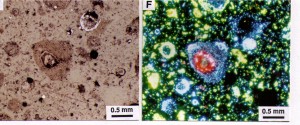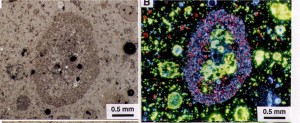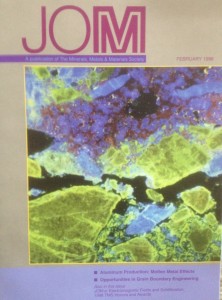Cathodoluminescence Microscopy (CLM) is a light microscopy and electron microscopy technique that utilizes electrons to activate luminescence of typically trace elements in phases.
CLM is useful for identifying specific phases, observing zoning within phases, observing textural features and fractures, observing relationship between phases for exploration, petroleum geology, fracking, economic geology, applied mineralogy, process mineralogy, applied microscopy, and mineral analysis.
Most work is confidential, however, here is an example of CLM of Refractory Barriers in Aluminum Reduction Cells published in Journal of Metals (JOM) by Dr. Ann Hagni.
Polished thin sections (1″ x 1-1/2″ x 30 um) and polished sections (1″ diameter) are typical input samples for CLM.


